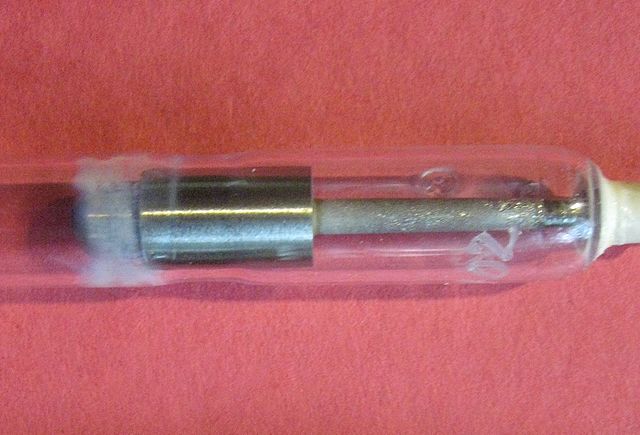Ablation is the removal or destruction of something from an object by vaporization, chipping, erosive processes, or by other means. Examples of ablative materials are described below, including spacecraft material for ascent and atmospheric reentry, ice and snow in glaciology, biological tissues in medicine and passive fire protection materials.
Ablation near the electrode in a flashtube. The high-energy electrical arc slowly erodes the glass, leaving a frosted appearance.
An Nd:YAG laser drills a hole through a block of nitrile. The intense burst of infrared radiation ablates the highly absorbing rubber, releasing an eruption of plasma.
Atmospheric entry is the movement of an object from outer space into and through the gases of an atmosphere of a planet, dwarf planet, or natural satellite. There are two main types of atmospheric entry: uncontrolled entry, such as the entry of astronomical objects, space debris, or bolides; and controlled entry of a spacecraft capable of being navigated or following a predetermined course. Technologies and procedures allowing the controlled atmospheric entry, descent, and landing of spacecraft are collectively termed as EDL.
Mars Exploration Rover (MER) aeroshell, artistic rendition
Apollo command module flying with the blunt end of the heat shield at a non-zero angle of attack in order to establish a lifting entry and control the landing site (artistic rendition)
Prototype of the Mk-2 Reentry Vehicle (RV), based on blunt body theory
Mk-6 RV, Cold War weapon and ancestor to most of the U.S. missile entry vehicles






